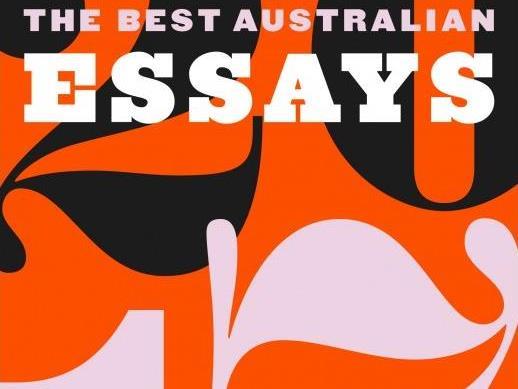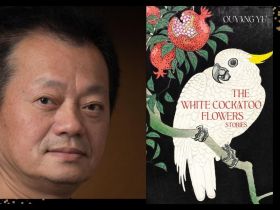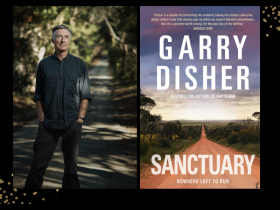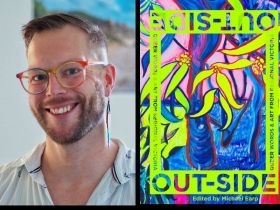Book cover image: The Best Australian Essays 2017, edited by Anna Goldsworthy. Photo (c) Black Inc.
The Best Australian Essays 2017 offers insight into many of the stories and issues that have plagued the news cycle and public consciousness this past year: Donald Trump, public policy, ethnic cleansing, class divides, domestic abuse, mental health and digital disruption, to name but a few. By injecting the self into these far-reaching topics, many of Australia’s best essayists have offered fresh perspectives on issues that have come to lose their significance through repetition and a general sense of hopelessness, invigorating them with new life. Not all of the essays chosen for this collection tackle world issues, but they all touch on human ones, whether that be ageing parents in Robert Skinner’s Lessons from Camels or the desire to know a companion’s history in Sonya Hartnett’s Hello, Stranger. Together, these collected essays represent a moment in time and simultaneously, showcase diversity, which, editor Anna Goldsworthy muses ‘is perhaps the most Australian thing about them.’
In her introduction, Goldsworthy shares William Deresiewicz’s definition of the personal essay expressed by him in the Atlantic, ‘what makes a personal essay an essay and not just an autobiographical narrative is precisely that it uses personal material to develop, however speculatively or intuitively, a larger conclusion.’ With this in mind, as well as Goldsworthy’s additional criterion, that an essay possess ‘the capacity to move’, it is little wonder that these selected 27 essays are considered the best written this year. Goldsworthy has succeeded through her selections in demonstrating the penetrative impact of the form, and its power to explore wider issues through what, at first, appears to be the narrow lens of the individual.
In her essay People Power at the Ponderosa, Mandy Sayer shows the resilience of the tenants of a public housing estate in the lead up to Christmas, which also highlights the many ways in which they are failed by the system. Micheline Lee draws on her own experience of the National Disability Insurance Scheme and questions the role of bureaucracy in her essay The Art of Dependency. Lech Blaine recounts a horrific night and the effects of trauma in The Bystander.
As Goldsworthy acknowledges, ‘much in these pages might lead to discouragement’ in reference to the state of the world and subject matter broached, but this is not a heavy read. Many of these essays tackle complicated topics, but as a collection, The Best Australian Essays 2017 is never an emotional slog. Amanda C. Niehaus’ segmented structure in her affecting essay Pluripotent lends a poetry to her exploration of motherhood, science and an uncertain future. Barry Humphries riffs on Australian colloquialisms in Up a Wombat’s Freckle, exposing many instances in which fact really was stranger than fiction. In Salt Blood, Michael Adams explores the transformational experience of freediving, and the inner calm that can be found in the ocean’s depths.
The sequence of essays in this collection is significant. As Goldsworthy states, ‘when a group of essays get together in a room they start talking to each other, often in surprising ways’, so it would appear no accident that Keane Shum’s eye-opening The Tamarind is Always Sour about the horrors suffered by the Rohingya is preceded by Stan Grant’s A Makarrata Declaration: A Declaration of Our Country, which outlines the ongoing struggle of the First Peoples to be recognised in Australian law. Similarly, Richard Cooke’s Bonfire of the Narratives about Trump’s ascension to presidency and the breakdown of a system sits alongside Nick Feik’s Killing Our Media, a look at the ongoing growth and influence of Facebook, along with its conduct, which runs the gamut of the morality spectrum, signalling the breakdown of yet another system. Helen Garner’s Why She Broke about a mother’s desperate act that led to the death of three of her children is followed by the only essay included in the collection not written by an Australian, Helen Garner’s Savage Self-Scrutiny by James Wood. This is a collection that comes to say more and be more than the sum of its parts.
Covering everything from the photography of Bill Henson to the white working class, The Best Australian Essays 2017 through its breadth of subject matter, writing styles and perspectives successfully shows that Australian thinking is not insular, nor singular in its scope. A great representation of 2017 as a whole, this collection is a must-read for anyone eager to engage with the experiences of those beyond their doorstep. As the late John Clarke so effectively shows in his Commonplace, which moves from migratory birds to spontaneous public theatre via some weird and wonderful detours, the arbitrary and seemingly unconnected are really not that way at all, and so it is with The Best Australian Essays 2017.
Rating: 4 ½ stars out of 5
The Best Australian Essays 2017
Edited by Anna Goldsworthy
Paperback, 304 pp, RRP $29.99
ISBN: 9781863959605
Black Inc.





